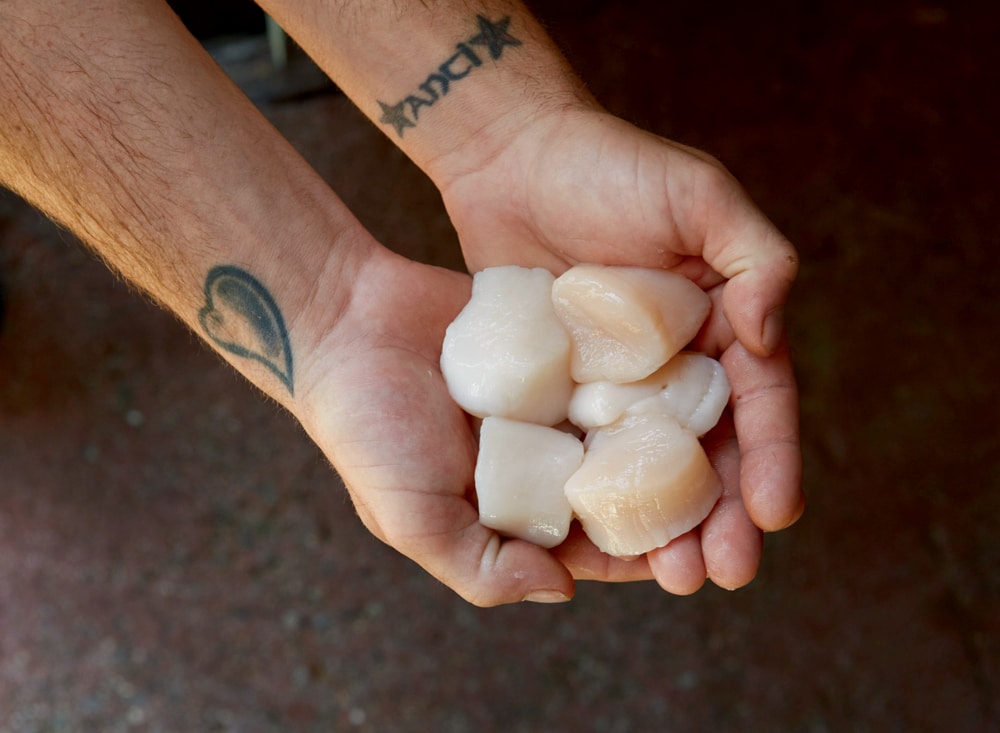Cooking Advice
Scallops Guide | What’s the Difference Between Sea Scallops and Bay Scallops?
Our quick and handy scallops guide includes the difference between sea scallops and bay scallops, wet and dry scallops, recipes, and more.

The part of the scallop that we eat is the adductor muscle, which is much larger than in most other bivalves because scallops are swimmers: They move by rapidly opening and closing their shells.
Photo Credit : Nina GallantWhat’s the difference between sea scallops and bay scallops? What does the “wet” in wet scallops mean? How many calories do scallops have? Read on to learn the answers.
Scallops Guide
- Wondering about the difference between sea scallops and bay scallops? There are two basic kinds of scallops: sea scallops, which are graded by the number of units (scallops) per pound (e.g., U10, U20/30), and bay scallops, which are much smaller (with usually 80 to 120 per pound) and caught in shallower waters (Nantucket Bay scallops are especially prized). The New Bedford catch consists primarily of sea scallops.
- “Day-boat scallops” refers to scallops caught on smaller vessels that harvest closer to shore. “Diver scallops” are actually hand-harvested by scuba divers.
- Scallops have slight variations in color, which do not affect their flavor. Most are white to off-white; others are pinkish, beige, or grayish, or have a slight orange cast (these are known as “pumpkins”).
- When buying scallops, look for “dry” scallops, which are always preferable to the “wet” scallops that come pre-brined in a solution of trisodium phosphate to extend shelf life and boost weight (bathed in this solution, the scallops absorb liquid, which dilutes their flavor).
- The part of the scallop we most commonly eat is the adductor muscle, which opens and closes the shell. (When preparing scallops, look for the tough bit of white tendon that holds the muscle to the shell; trim it with a sharp knife.) In Europe and some parts of the U.S., scallop roe is also considered a delicacy.
- When prepared without heavy sauces, scallops are a healthy food. A standard 4-ounce serving will set you back only about 100 calories, with zero grams of fat. Plus, each serving delivers 16 to 23 grams of protein.


